Securing a Plural and Peaceful India: Strategies to Prevent a Recurrence of the Godhra Riots 2002
Political leaders sometimes fuel religious animosity for their political advantage. They often exploit social values and principles of equality for their own gain in political campaigns and public speeches. Additionally, they consider the dominance of a particular group within a dynasty, based on factors like caste, gender, and religious beliefs. Traditionally, violence typically featured two distinct parties: the "Oppressed" and the "Oppressor." The oppressed party typically had no desire to engage in violence, whereas the oppressors often failed to foresee the significant humanitarian toll that would impact both groups as a result of their actions. A comparable incident occurred in the state of Gujarat in 2002, where a violently supported Hindu supremacist episode has been recorded in history as the "Godhra Riots 2002" or "Gujarat Riots 2002."
In accordance with the chronicled report, this riot made an unalterable blackspot in the plural Indian history resulting in 1044 demises, 223 missing fellows, and 2500 injured vulnerable victims. To make a round figure of the dead, approximately 790 were Muslims and 254 were from the majority Hindu community. As per the Concerned Citizens Tribunal’s report, up to 1,926 people may have lost their precious lives in the hands of perpetrators to this gruesome Godhra Riots. Moreover, additional estimates fixed the death toll at much more than 2,000. Numerous brutal murders and rapes, coupled with extensive looting and property destruction, have been reported. A more disturbing aspect is that both the police and government officials have been implicated in intentionally providing lists of Muslim-owned properties and homes to the rioters, directing them to specific locations.
The Historical Milieu
Historically, the definition of Godhra Riots 2002 stands at the sentences that “The 2002 Gujarat riots, sometimes referred to as the 2002 Gujarat violence, were a serial three-day intercommunal conflict in the Gujarat state in Western India”. A mainstream reason for the incident was the train fire that occurred in Godhra on February 27, 2002, which many Hindu mobs claimed was a deliberately coordinated act by Muslims from the nearby areas. Additionally, certain politicians, who were branded as instigators, were accused of exacerbating the situation by addressing the issue on political platforms, further inflaming tensions. Just after being exposed to the fabricated narratives surrounding the ‘The Burning of Trains’ laden with the pilgrims and Karsevaks returning from Ayodhya, the Hindu dominance, without probing into the reality, came out of their comfort zone and assaulted the vulnerable minor Muslims which caused irreparable loss. Regarding this manipulated incident, Prem Shankar Jha, in his article for The Wire, titled it "Godhra; where the fall of Indian Democracy Began."
BBC reports in a documentary titled "India: The Modi Question" stated that the Hindu mob was aggressive on the outskirts of Ehsan Jafri’s residential mansion demanding him out of his rest room. Ehsan Jafri, former prominent politician and a Member of Parliament of 6th Lok Sabha for Indian National Congress, pleaded with them to spare others and take his life instead. Shockingly, the mob, driven by a lynch mentality, remained unresponsive to his appeals and tragically dragged him lifeless, brutally killing him in the stifling hours of February 28, 2002, in Gulbarga.[i]
Focused Attacks and Shelling on Muslims
The duration of Godhra Riots was extended to three days wherein the Muslims were cold-bloodedly targeted. Horrifically, their heads were cut out of their physic, their women were inhumanely raped, tortured and sexually assaulted; the womb of the pregnant women were torn out and their infant children were mercilessly seized out, showing their withered innocent face to their miserable mothers. These Hindu extremist inhumane goons and bloodless mobs did not hesitate to gruesomely assault even the innocent children.
Not only that but there are myriads of organizations worldwide who criticised this Hindu-mob’s willy-nilly sponsored violence that caused irreversible humanitarian loss. Globally, the Organization of Human Rights Watch strongly condemned the Indian Government along with the Gujarat state administration for the painful failure in providing even the primary refuge or shelter to those who had fled their homes during the gruesome violence to have been facilitated at least relief camp whereas “overwhelming majority of them were the assaulted Muslims”.[ii] According to a study from an international fact-finding commission entirely made up of women specialists hailing from the US, UK, France, Germany, and Sri Lanka, "the sexual violence was being used as a prepared strategy aimed at terrorizing the women belonging to minority community of the state."
As per the data analyzed by Teesta Setalvad, the renowned Indian Civil Rights activist and secretary of Citizens for Justice and Peace (CJP), an organization launched aiming at the advocacy for the victims of 2002 Gujarat Riots, the total number of people who had been killed by police shooting on the violent hours of 28 February 2002 in the outskirts of Morjari Chowk and Charodia Chowk districts were Muslims – transparently probed by her team. Truthfully, the Indian socialist, lawyer, human rights columnist, Shri Kalpana Kannabiran authentically affirmed that “The fact that the rapes were carried out as part of a purposeful, well-planned strategy qualifies the violence as both a political pogrom and a genocide”.[iii], [iv] Other violent crimes against women included beating, acid attacks, and killings of expectant women.
Moreover, according to the statement of the testimony heard by the Concerned Citizens’ Tribunal Committee, the mainstream committee formed to probe into the 2002 Riots, which stated as; “A chilling technique, absent in pogroms unleashed hitherto but very much in evidence this time in a large number of cases, was the deliberate destruction of evidence. Barring a few, in most instances of sexual violence, the women victims were stripped and paraded naked, then gang-raped, and thereafter quartered and burnt beyond recognition; the leaders of the mobs even raped young girls, some as young as 11 years old before burning them alive. Even a 20-day-old infant, or a foetus in the womb of its mother, was not spared”.[v]
Godhra Sabarmati Train Incident
As per the Hindu mobs and the goons in Saffron, the Godhra train-burning of Sabarmati Express on the very morning of 27 February 2002 was perpetrated by the instigation of Muslim communal leaders. But! Closely all and sundry reports are in the favour of the argument that “the Godhra Train-burning was just an incident” nothing else. The following statement is what the Concerned Citizens’ Tribunal (CCT Committee) observed in 2003:
“On 7-5-2002, we inspected the coach and the site where it was burnt. The site where the train stopped is an elevated bund. From the ground level, the height of the bund could be about 12-15 feet and it is a slope. At the top, there is hardly enough space for 2,000 persons to assemble on either side of the track. Assuming that so many had gathered at that spot, the crowd would be spread over a much larger area than the stretch of coach S-6. This is only to indicate that if the government version is true, the other coaches would have been as easy a target as Coach S-6.
Again, if one takes into account the height of the bund and the height of the train, and if fire-balls were to be thrown at the train, the outside of the coach should have shown signs of being charred. But we found that there were no such marks below the windows; the charred marks were to be seen only around the windows and above that height. This is a clear indication that the fire started inside the coach and the flames leaping out of the windows singed the outside of the compartment, above window level. Therefore, even to the naked eye, it was clear that the fire was from within and not from outside. [vi]
Strategies to Prevent the Repetition of Godhra Riots 2002 for a Plural and Peaceful India.
Inherent to human nature is the predisposition to be friends with one another, even though misunderstandings and misconceptions can occasionally arise. Nevertheless, history has repeatedly shown that when such misunderstandings and misconceptions are deliberately fomented by an arch-enemy of that friendship, with self-serving motives, they can escalate into devastating acts of violence. This is precisely what transpired during the Sabarmati Train burning incident in Godhra on the morning of February 27, 2002. According to all official reports, the Sabarmati Train Burning was nothing but just an incident. But! For many political gains, the BJP Pressure group, Rashtriya SwayamSevak Sangh’s (RSS) and off-shoot organization, Vishwa Hindu Parishad (VHP) have taken it violently and instigated the Hindu bothers against the vulnerable Muslim community which consequently caused approximately 1500 deaths and several other massive humanitarian losses.
These communal issues and sectarian conflicts could reach an optima solution only when the extremism and radicalism are kept at bay by all the religious organizations of India. The constitution of India ensures that “India is a plural country and preserves a plurally cultural history”. Thus, the plural India is for the plural communities of the nation, including Hindu, Muslims, Sikh, Christian, Jews, Parsi, Buddhists and Jains, with any condition, and thus no specific community should enjoy the power of debarring minorities, by force of political power or oppression. While saying so, this has to be agreed upon that these statements could not be translated into practicality without proper actions from all concerned parties. Apex Court of India needs to hold the perpetrators into account by advocating laws against extremist religious organizations no matter whether they are Jaish-E-Muhammad, Lashkar-E-Taiba, RSS, VHP, or others if the radicalizing phrases are heard or read from their presses or addresses. To resolve this impasse, Election Commission of India may go extra mile by lodging some additional clauses into their Model Code of Conduct. For instances;
⮚ If the government, under whose tenure this communal violence has occurred, fails to produce conclusive reports on the ground or bring the culprits to severe justice, there should be consideration for dissolving that government.
⮚ The political party whose pressure groups are found to be guilty, either directly or indirectly assisting in any riot, should face consequences, including a ban on fielding candidates in upcoming elections for a specified period.
⮚ Following the dissolution of a government implicated in the violence, the Chief Election Commissioner (CEC) should promptly organize elections within the same year. This allows voters to discern between those who exploit violence and those who genuinely care for their well-being, facilitating the election of alternative leadership.
In conclusion, when all these measures are combined, the safeguards and protective provisions for the minority community would see a significant boost, making it much more challenging for opportunistic political parties to exploit communal violence for their own electoral advantages.
References:
- Kabir, Ananya Jahanara (2011). Sorcha Gunne; Zoe Brigley Brigley Thompson (eds.). Feminism, Literature and Rape Narratives: Violence and Violation. Routledge. p. 146. ISBN978-0-415-89668-9.
- Smith, Paul J. (2007). The Terrorism Ahead: Confronting Transnational Violence in the Twenty-First Century.
- Khanna, Renu (2008). "Communal Violence in Gujarat, India: Impact of Sexual Violence and Responsibilities of the Health Care System". Reproductive Health Matters.
- Wilkinson, Steven (2005). Religious politics and communal violence. Oxford University Press.
- Watch, Human Rights .1 May 2002. "India: Gujarat Officials Took Part in Anti-Muslim Violence". Human Rights Watch. Archivedfrom the original on 13 October 2010. Retrieved 4 December 2016.
- Kannabiran, Kalpana. 2012. Tools of Justice: Non-discrimination and the Indian Constitution. Routledge.
- Filkins, Dexter. 9 December 2019. "Blood and Soil in Narendra Modi's India". The New York Archive.
- Martin-Lucas, Belen (2010). Sorcha Gunne; Zoë Brigley (eds.). Feminism, Literature and Rape Narratives: Violence and Violation
- Prem Shankar Jha. 03 March 2022. “Godhra, Where the Fall of India’s Democracy Began”. The Wire, Opinion Page, Category: Communalism.
- “Gujarat 2002: Crime Against Humanity Volume 2”. 24 October 2002. Pune University.
- “India; The Modi Question Episode-1”/ “India; The Modi Question Episode-2”. 09 February 2023. British Broadcasting Corporation (BBC).
Endnotes
[i] “India; The Modi Question Episode-1”/ “India; The Modi Question Episode-2”. 09 February 2023. British Broadcasting Corporation (BBC).
[ii] Watch, Human Rights .1 May 2002. "India: Gujarat Officials Took Part in Anti-Muslim Violence". Human Rights Watch. Archived from the original on 13 October 2010.
[iii] Kannabiran, Kalpana. 2012. Tools of Justice: Non-discrimination and the Indian Constitution. Routledge.
[iv] Filkins, Dexter. 9 December 2019. "Blood and Soil in Narendra Modi's India". The New York Archive.
[v] “Gujarat 2002: Crime Against Humanity Volume 2”. 24 October 2002. Pune University.
[vi] Prem Shankar Jha. 03 March 2022. “Godhra, Where the Fall of India’s Democracy Began”. The Wire, Opinion Page, Category: Communalism.
About the author
Nairul SK is a PG research scholar at Darul Huda Islamic University, (Dept. of Islamic Economics and Finance), Kerala, India, and B.A Political Science Hons Student at IGNOU. His research areas include Islamic Economics and Finance, Political Science, Islamic Studies, the Study of Human Behavior, and Islamic Psychology.
Disclaimer
The views expressed in this article are the author’s own and do not necessarily mirror Islamonweb’s editorial stance.

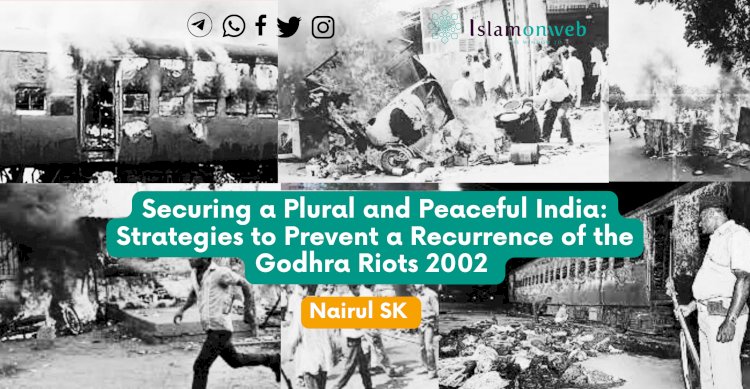


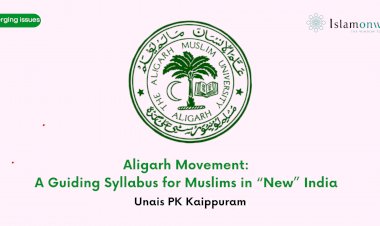
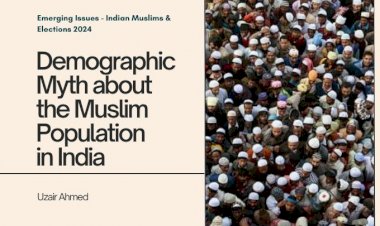
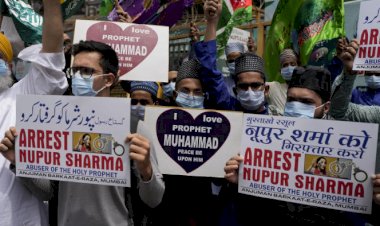
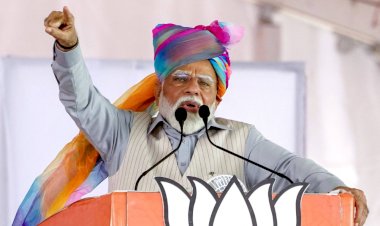
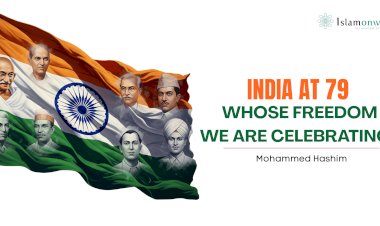
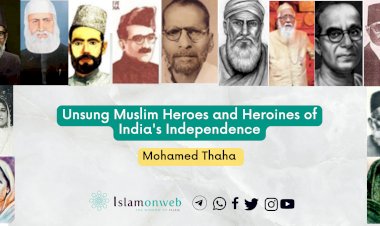














Leave A Comment